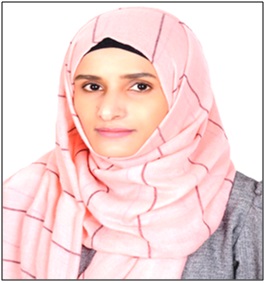PSEUDOMONAS AERUGINOSA SKIN-NASOPHARYNGEAL COLONIZATION IN THE IN-PATIENTS: PREVALENCE, RISK FACTORS AND ANTIBIOTIC RESISTANCE IN TERTIARY HOSPITALS IN SANA'A CITY -YEMEN
Keywords:
active surveillance, antibiotic resistance, colonization, Pseudomonas aeruginosa, risk factors, tertiary hospitalsAbstract
Objective: Pseudomonas aeruginosa is one of most important cause of healthcare-associated infections. This active surveillance cross sectional study was aimed to determine the rate of P. aeruginosa colonization among inpatients at three tertiary hospitals in Sana'a city. In addition, to determine risk factors of colonization and the antibiotic susceptibility of the isolated P. aeruginosa.
Methods: The study included 327 inpatients. Skin and nasopharyngeal swabs were collected from all participated patients and data were collected by predesigned questionnaire. Standard methods of isolation and identification were used to isolate bacteria in pure culture then identify. Also, antibiotic sensitivity for isolated P. aeruginosa was determined by the disc diffusion method. 42 patients (12.8%) were colonized with P. aeruginosa on skin and nasopharyngeal.
Results: The significant risk factors of colonization were male patients (OR=2.5), older age (OR= 2.2), burn ward (OR=37), long stay in hospital (OR=4) and burn as underlying disease (OR=45). The isolated P. aeruginosa were completely resistant (100%), to Aztroneome, Ceftriaxone, and Ciprofloxacine; and the rates of resistant were ranged between 83.3-85.7% for Amikacin, Ampicillin sulbactam Levofloxacin. Also the rates were 71.4% for Netilmicin and 92.9% for chloramphenicol. Moreover, the rates of resistant were low for Gentamicin (35.7%), Imipenem (11.9%), Pipracillin Tazobactam (11.9%), Ticaracillin calvulanic acid (31%) and Colistin sulphat (14.3%).
Conclusion: In conclusion, this study has highlighted the role of hospitalization as a significant risk for P. aeruginosa colonization; concerted and coordinated efforts are required both in the hospital and community to tackle this. These data emphasize the need to identify hospitalized patients colonized with P. aeruginosa on admission. Prediction rules or rapid diagnostic testing will help clinicians more appropriately choose empiric antibiotic therapy if subsequent infections occurred.

Peer Review History:
Received 3 October 2018; Revised 5 November; Accepted 27 December; Available online 15 January 2019
Academic Editor:
Dr. Iman Muhammad Higazy , National Research Center, Egypt, imane.higazy@hotmail.com
, National Research Center, Egypt, imane.higazy@hotmail.com
Reviewer(s) detail:
Dr. Omonkhelin J Owolabi , University of Benin, Nigeria, owolabi@uniben.edu
, University of Benin, Nigeria, owolabi@uniben.edu
Dr. Francis Adou Yapo , Felix Houphouet Boigny, University of Abidjan, Ivory Coast, fyapo@yahoo.fr
, Felix Houphouet Boigny, University of Abidjan, Ivory Coast, fyapo@yahoo.fr
Downloads

Published
How to Cite
Issue
Section

This work is licensed under a Creative Commons Attribution-NonCommercial 4.0 International License.









 .
.